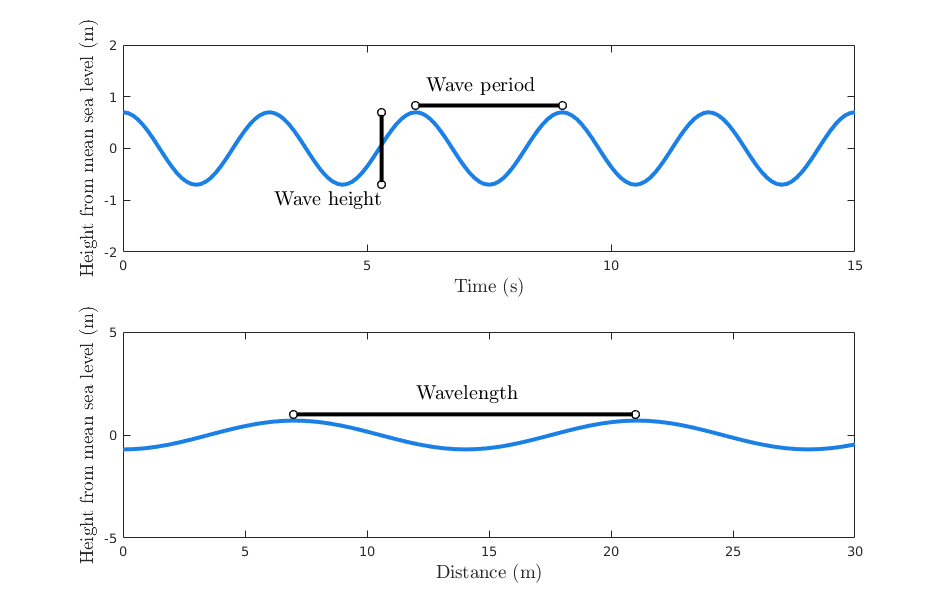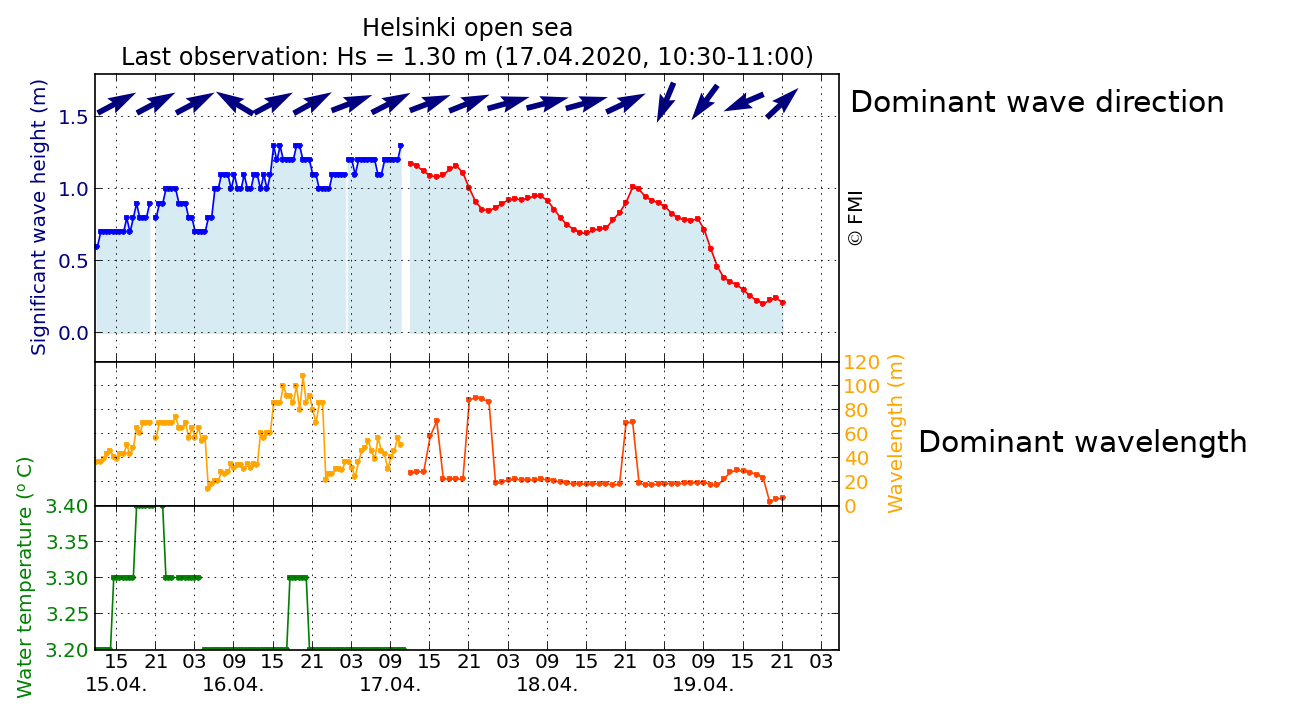Wave terminology



A wave buoy cannot measure the length of the waves, but the waves can instead be separated based on their period. The modal period (or dominant period) of the wave field describes the length of the waves that, on average, are the highest. If the water depth is known, one can deduce the wavelength. This wavelength is called the significant wavelength (or the dominant wavelength).
If a wind is blowing from a straight shoreline, the resulting waves of different length have a similar direction. An irregular shoreline or depth refraction can still results in waves of different length having different directions. These phenomena are typical especially in the archipelago. The swell that is left after the wind has calmed can have a totally different direction than the waves generated on top of the old swell by a new breeze. The dominant direction tells the direction of the waves containing the most energy. As with the wind, the wave direction is often given as the direction from.

